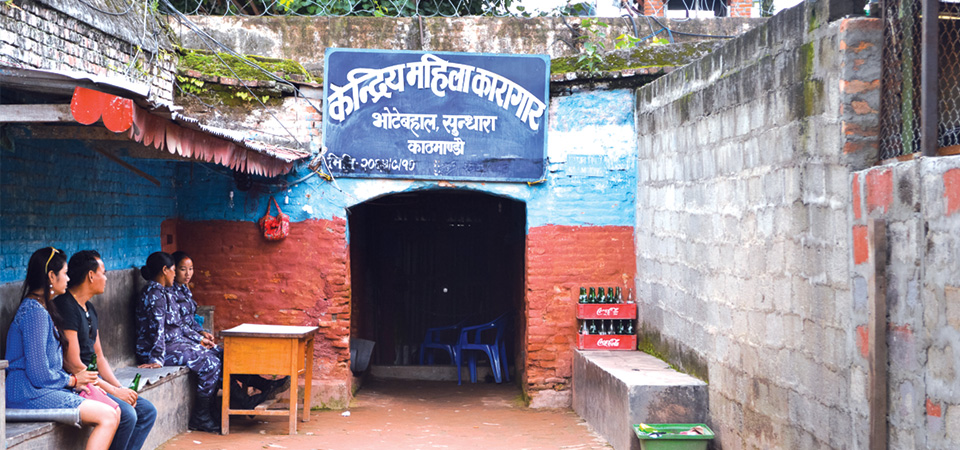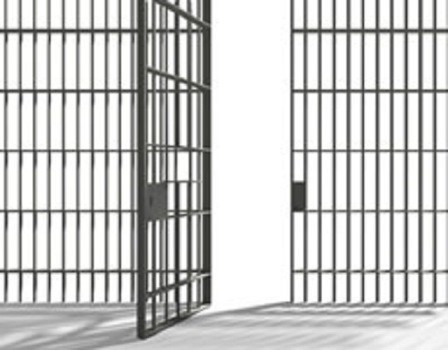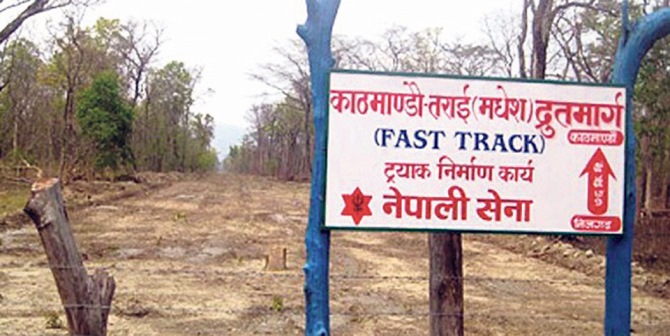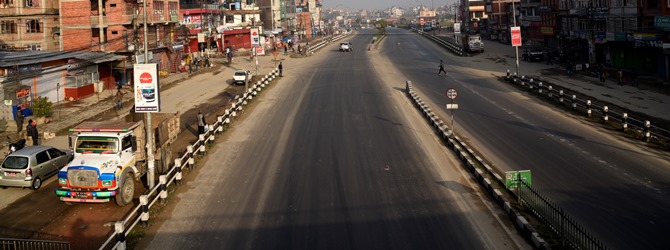74 jails housing 30,000 inmates risk disease transmission

By Purushottam P. Khatri
Kathmandu, Aug. 26: With the number of inmates increasing every year, prisons across the country have been forced to house far more prisoners than they are capable to hold at a time. That has posed a risk of transmission of communicable diseases and occasional mass brawls.
At present, there are nearly 30,000 jailbirds in 74 prisons across the country although the total capacity of these prisons is just 16,000. Of them, 1,281 are foreigners, including 1,143 Indian nationals.
It had already been eight to nine years since the construction of open jail started in Nuwakot district to house over 7,500 inmates at a time, but it has not been completed yet, according to the Department of Prison Management.
According to a three-year report submitted by the Department of Prison Management to the Office of Attorney General (OAG) in 2019, the Central jail in Jagannath Dewal, which has a capacity to accommodate 1,500 inmates at a time, had been found housing 3,130.
Similarly, the capacity of Nakkhu Jail, in Lalitpur district, is 700 but has been keeping around 1,390 inmates. Also, Kathmandu’s Dillibazaar-based jail has been found housing 587 inmates, despite its capacity being only 400.
As mentioned in the report, the actual capacity of 74 prisons is 16,556, but were keeping 23,126 jailbirds at the time. Today, that figure is believed to have surpassed 30,000.
Ramchandra Tiwari, Director and Information Officer for the Department, said that the number of jailbirds has been growing by 2,290 annually.
According to the Department, there are 74 prisons in 72 districts across the country, with two prisons each in Kathmandu and Dang district. Bhaktapur, Bara, Dhanusha, East Nawalparasi and East Rukum do not have prisons.
Similarly, child correctional centres are also in operation in Bhaktapur, Kaski, Morang, Makwanpur, Parsa, Rupandehi, Banke and Doti districts.
Director General of the Department Janak Raj Dahal said that the government was busy building prisons in Nuwakot and Banke with a combined capacity of accommodating 10,000 inmates. In Banke, the government has been constructing a jail in an area of 10 bigaha land to house more than 3,000 inmates while that figure in Nuwakot is upwards of 7,000.
“We have begun our process to relocate all the prisoners of the central jail to Nuwakot jail within next three months as construction of most infrastructures has been completed,” Dahal said.
He added that a few days ago, officials from the Ministry of Home Affairs, Prison Management, the Nuwakot CDO and other security officials had returned after visiting the open jail in Nuwakot.
Following the relocation, the government has also planned to develop the central jail as a museum.
A person sentenced by a court following final verdict is called a ‘prisoner’ and that who is serving a prison sentence awaiting final verdict but has yet to be convicted guilty is called a ‘detainee’. The central jail, spread across an area of 42 ropanis, has 1,784 prisoners and 1,431 detainees. The Department updates record of prisoners and detainees every four months.
Recent News

Do not make expressions casting dout on election: EC
14 Apr, 2022
CM Bhatta says may New Year 2079 BS inspire positive thinking
14 Apr, 2022
Three new cases, 44 recoveries in 24 hours
14 Apr, 2022
689 climbers of 84 teams so far acquire permits for climbing various peaks this spring season
14 Apr, 2022
How the rising cost of living crisis is impacting Nepal
14 Apr, 2022
US military confirms an interstellar meteor collided with Earth
14 Apr, 2022
Valneva Covid vaccine approved for use in UK
14 Apr, 2022
Chair Prachanda highlights need of unity among Maoist, Communist forces
14 Apr, 2022
Ranbir Kapoor and Alia Bhatt: Bollywood toasts star couple on wedding
14 Apr, 2022
President Bhandari confers decorations (Photo Feature)
14 Apr, 2022





.jpg)




